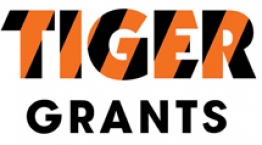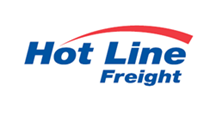$500 Million For Transportation Projects
 U.S. Transportation Secretary Anthony Foxx announced that $500 million will be made available for transportation projects across the country under a seventh round of the highly successful U.S. Department of Transportation’s (DOT) Transportation Investment Generating Economic Recovery (TIGER) competitive grant program.
U.S. Transportation Secretary Anthony Foxx announced that $500 million will be made available for transportation projects across the country under a seventh round of the highly successful U.S. Department of Transportation’s (DOT) Transportation Investment Generating Economic Recovery (TIGER) competitive grant program.
TIGER 2015 discretionary grants will fund capital investments in surface transportation infrastructure and will be awarded on a competitive basis to projects that will have a significant impact on the nation, a region, or metropolitan area.
The TIGER 2015 grant program will continue to make transformative surface transportation investments by providing significant and measurable improvements over existing conditions. The grant program will focus on capital projects that generate economic development and improve access to reliable, safe and affordable transportation for disconnected both urban and rural, while emphasizing improved connection to employment, education, services and other opportunities, workforce development, or community revitalization.
TIGER (Transportation Investment Generating Economic Recovery) Grants provide a unique opportunity for the DOT to invest in road, rail, transit, bicycle/pedestrian, port, and multi-modal projects that achieve critical national objectives. Since 2009, Congress has dedicated more than $4.6 billion for seven rounds to fund competitive projects that have a significant impact on the Nation, a region, or a metropolitan area. Through the TIGER program, DOT has awarded grants to 342 projects in all 50 States, the District of Columbia, and Puerto Rico.
What makes the TIGER program unique for new transportation projects?
Flexibility
TIGER can provide capital funding directly to any public entity, including municipalities, counties, port authorities, tribal governments, MPOs, or others in contrast to traditional Federal transportation programs that provide funding to limited groups of applicants (mostly State DOTs and transit agencies). This flexibility allows our traditional partners at the state and local level to work directly with a host of entities that own, operate, and maintain much of our transportation infrastructure, but otherwise have limited ways to receive Federal support.
Innovative Funding
TIGER’s competitive structure and broad eligibility allow project sponsors to develop multi-modal, multi-jurisdictional projects that may not be eligible for funding through traditional DOT programs. For example, in 2009, the TIGER program partnered with the State of California (Caltrans) and the San Diego Association of Governments (SANDAG)—
the regional planning agency that represents 18 cities and county government to award $20.2 million to the Otay Mesa Port-of-Entry project– the largest freight border crossing between California and Mexico – to provide a direct six-lane highway link and reduce Interstate congestion.
Leveraging Resources
TIGER projects have historically achieved, on average, co-investment of 3.5 dollars (including other Federal, State, local, private and philanthropic funds) for every TIGER dollar invested. The Razorback Regional Greenway TIGER 2010 project successfully leveraged $15 million from the Walton Family Foundation to support development of this 36-mile bicycle and pedestrian network in Northwest Arkansas.
Encouraging Partnership
The TIGER program encourages States and localities to work together to bring more innovative, cross-modal proposals to the table. Priority is given to transportation projects that demonstrate strong collaboration among a broad range of participants, integration of transportation with other public service efforts, and/or projects that are the product of a robust planning process. For example, the Miami Trail/Everglades Restoration project, awarded $20 million in TIGER 2014, has extensive stakeholder collaboration and support including the National Park Service, the US Army Corps of Engineers, State and local agencies, and numerous conservation advocacy organizations.
Rural Investments
The TIGER program enables DOT to use a rigorous process to select projects with exceptional benefits, explore ways to deliver projects faster and save on construction costs, and make investments in our Nation’s infrastructure that make communities more livable and sustainable, including in rural areas. Since 2009, the TIGER program has provided over $790 million to 117 projects in rural areas across the United States.
TIGER Transportation Project Spotlight
Memorial Bridge
The Memorial Bridge on US Route 1 is the only bicycle and pedestrian connection between NH and ME and is located in the heart of downtown Portsmouth. Before a 201X TIGER grant, the bridge had a sufficiency rating of 6 out of 100, safety concerns that resulted restricted bridge traffic to no more than three tons. A $20 million TIGER grant enabled this bridge to resume normal operations and it was reopened in August 2013.
CREATE
The Chicago Region Environmental and Transportation Efficiency Program, (CREATE) partners U.S. DOT, the State of Illinois, the City of Chicago, Metra (the region’s commuter rail agency), Amtrak, and the Nation’s largest freight railroads in an approximately $1.5 billion program that includes 70 intermodal projects that restructure, modernize, and expand existing rail facilities to improve freight and passenger mobility in and through Chicago while reducing negative environmental and social impacts. The CREATE $100 million TIGER grant leveraged $14 million in State and local funding and $48 million in funding from the private railroads. CREATE adds capacity and reduces delays for trains and motorists using at-grade crossings, and improves roadways and sidewalks.
Atlanta Streetcar
Born from a relationship between the city, local businesses, and MARTA (the local transit authority), the Atlanta Streetcar project received a $47.6 million TIGER grant to construct a new east-west streetcar line connecting many of the residential, cultural, educational and historic centers downtown, improving Atlanta’s quality of life and providing enhanced transit options. The streetcar, which opened for passenger service in December 2014, provides residents, students and visitors with easy access to jobs and public amenities in the core of downtown Atlanta, and serves an economically distressed area, spurring pedestrian-oriented development and reinforcing development plans.
US-491 Safety Improvements
US-491 is the primary highway in an extremely rural area of northwest New Mexico, connecting the Navajo Nation to surrounding areas, and is a major trucking route with increasingly high volumes of commercial traffic. Prior to construction, this stretch of highway experienced fatality rates between two and three and a half times the state average. A $31 million TIGER grant enabled the Navajo DOT to construct two additional lanes and to separate north-south traffic on this corridor, limiting fatal accidents. Additional safety improvements include construction of turn lanes for acceleration and deceleration, and improved intersections, signage, markings, and drainage facilities.
